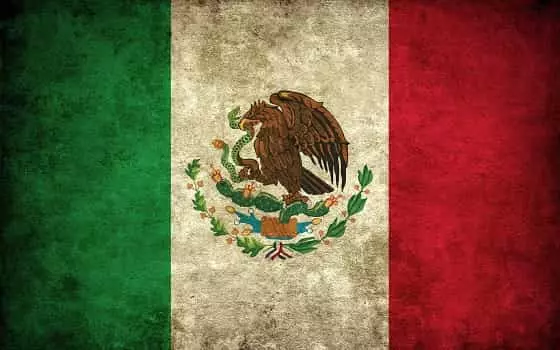Lemon or Citrus limon is native to Asia, mainly in northeastern India, China, and northern Myanmar. It is used around the world for non-culinary and culinary purposes, especially for its juice. While lemon juice is used for cleaning and culinary purposes, the peel and pulp are also used in baking and cooking.
A good source of fiber and Vitamin C, lemons comprise several plant compounds, essential oils, and minerals. In addition, it also has numerous health benefits. Consuming lemons may reduce the risk of cancer, heart disease, and kidney stones. There is a number of countries that have been producing lemon in good quantity.
As per a report, around 17,384 130 tonnes of lemon are produced annually worldwide. India is one of the largest producers in the world, followed by Mexico, China, Argentina, Brazil, Spain, and Turkey.

Top Countries for Lemon Production in World
In this article, we’ve rounded up the top 10 largest lemon-producing countries in the world.
1. India

In the world, India is the biggest manufacturer and supplier of lemons and limes, with an overall production of around 2.978.000 tonnes annually. This country’s citrus production ranks third after the production of bananas and mango. In recent years, India’s lemon market has been booming. But, lemons and limes in India are not as large as those in other parts of the world.
Nowadays, Lemon is produced throughout the nation for different purposes. However, the state of Maharashtra, Andhra Pradesh, Gujarat, Tamil Nadu, Bihar, and Rajasthan engages in producing lemons for commercial purpose, while other states are growing lemons for domestic usage.
One report state that India produces approximately 17% of the world’s Lemons. The nation grows around 37.17 lakh tonnes of fruit every year. It is produced in orchards spanning 3.17 lakh acres across the country.
2. Brazil

Brazil is another largest citrus fruit-producing country, with a total production of 21 million. In addition, the country produces 1,606,000 tonnes of lemon annually, of which a large percentage is exported internationally. It is believed that 35 percent of the oranges on earth are produced in the land of Brazil.
According to the data, Brazil exported about 105.4 thousand tonnes of lemons, 16% more than last year. In the first ten months of 2020, revenue from supplies was recorded at USD 89.8 million, an increase of 16% over previous years. The production of citrus is majorly grown in the principal citrus pole of the country encompasses the states of Sao Paulo, Parana, and Minas Gerias.
3. China

Yet another largest exporter in terms of growing lemons, China has grown a vast amount of lemons and lines. It is also the 2nd largest producer of all citrus fruits together. As per stats and numerous reports, China grows around 20 million tonnes of citrus fruits yearly, which is enough to fulfill the requirement of its domestic markets.
Out of this large number, 1,668,000 numbers of limes and limes are being produced at present. In China, the production of citrus fruits has increased by 20 percent over 50 years. As a result, China has become the leading country for more hits in its production. Interestingly, only 2% of the total lemon production and other citrus fruits are exported worldwide from China. In 2020, China’s citrus fruit production was 44.6 million tonnes, which increased from 495,589 tonnes in 1971 to 2020, producing an average yearly rate of 10.50%.
Anyue Country in Sichuan province is foremost as the Lemon Capital of China. Presently, this nation boasts a lemon-planted area of about 34,700 hectares and a yearly production of around 600,000 tonnes, reported for over ½ of both China’s overall lemon-growing area.
4. United States of America

Apart from being the world’s largest producer of lemon, America also stands as the leading producer of grapefruit. It produces a vast number of whole citrus fruit with approximately 10 million tonnes, which includes a massive part of lemons and limes. The major lemon producers in the United States are Arizona, California, Texas, and Florida. The significant production of lemon in the country is consumed by its people as a supplementary diet.
In 2020-2021, US growers produced an estimated 884,000 tonnes of lemons, as per the US Department of Agriculture’s Economic Research Service. About 80% of these lemons supply to the fresh market. However, most American lemons are produced in California and Arizona. As a result, these regions had more minor crops in 2020-2021, with a 2% reduction in fresh market lemons in California and a 50% reduction in the same range in Arizona.
5. Mexico

Mexico is another leading country with a production of 1,880,000 tonnes of lemons and limes annually. It is the only exporter of limes and other fruits to the markets of the United States. Although all the states and territories of the country grow citrus fruits, the maximum production comes from Nuevo León, which is sufficient to meet the export demand internationally.
However, incompatible climate change in the country is causing problems in the production of citrus fruits, which cause significant damage to the crop before the harvest season. In 2021, Lemon production volume in this country was estimated to be around 3.22 million metric tonnes, an increase from 2.98 metric tonnes the year before.
6. Spain

Spain is not only a sunny country with highly fertile soils but also one of the largest producers of citrus fruits such as lemons. The country produces 880,000 tonnes of lemons annually, contributing to its overall fruit production of 5,703,600 tonnes. One report states that Spain is the world’s 2nd largest producer of processed and fresh lemons, with a volume of more than 700 million euros.
According to the forecast of the lemon harvest, lemon production is estimated total 1,035,000 tonnes. This data shows a significant reduction compared to the record 1,340,000 total production expected for 2020-2021.
7. Iran

Iran is famous for having large orchids of citrus fruits, like lemons. However, it is located on geographically dry land in Asia, which makes it one of the leading citrus producers. Iran produces about 3,739,000 tonnes of citrus fruits annually, with an overall 648,790 producers of lemon.
This country supplies citrus fruits to North Africa and the Middle East, making it the leading producer in these regions. The production of lemons in this country is based in the Mazandaran province, near the Caspian Sea. Iran was ranked 10th with a share in the production of 2.29 percent in 2020.
8. Italy

Huge citrus plantations are haphazardly under the sun all around Italy, with giant trees bearing oranges and lemons. The country produces 769,536 tonnes of lemons from its total 3,579,782 tonnes of citrus production annually. Calabria and the world’s fashion capital, Sicily, are two of Italy’s most extensive lemon regions. However, oranges are the most common citrus fruit available throughout Italy. Unfortunately, the country’s fertile soil and weather are deadly for growing citrus fruits.
Spain has also increased its planting area for lemon production to approximately 45,000 hectares. Also, it is the first country to supply lemons internationally for fresh consumption, majorly through Valencia and Murcia, as well as the Andalusia region.
9. Nigeria

In the 9th spot, Nigeria is the largest lemon producer in the world. The substantial citrus plantations of this country have considered to be one of the leading producers in this business. Undoubtedly, exports raise the maximum of its overall revenue in Nigeria.
The country is famous for consuming raw citrus fruits without waiting to ripen, producing 707,546 tonnes of citrus. Delta, Osun, Kaduna, Oyo, and Ekiti are some of the important provinces of Nigeria to grow lemons. The potential for trading, farming, and exporting lemons within and outside Nigeria grows daily with a significant local and international demand.
10. Turkey

Turkey is amongst the top 10 countries in lemon production. The Mersin and Antya provinces of Turkey grow citrus fruits considerably. Turkey’s yearly lime production is estimated at 706,652 tonnes. It has a large market for the sphere and huge limes throughout the year. In 2021-2022, Lemon production in this country was estimated to enhance by 27% to 1.4 million metric tonnes.
Conclusion
Lemon’s unique sour taste makes it a featured ingredient in foods such as lemon meringue pie and lemonade and an auxiliary ingredient in various drinks, such as mocktails. Its ability to add a tang to food or a slight splash of energy in a summer drink makes it one of the most consumed fruits in the world.
Lemon Production FAQs
Q. What are the ideal growing conditions for lemon trees?
Ans: Lemon trees thrive in warm climates with temperatures between 70 and 100 degrees Fahrenheit. They prefer well-draining soil with a pH of 5.5 to 6.5, and require regular watering.
Q. How are lemons harvested?
Ans: Lemons are usually harvested by hand, using pruning shears to cut the fruit from the tree. They are then sorted by size and quality before being packaged for shipment.
Q. What are some common pests and diseases that affect lemon trees?
Ans: Lemon trees can be susceptible to a number of pests and diseases, including aphids, mites, scale insects, and citrus greening disease. Regular monitoring and treatment can help prevent these issues.
Q. What is the global production of lemons?
Ans: The global production of lemons in 2023 was approximately 20.83 million metric tons.
Q. What are some popular lemon varieties?
Ans: Some popular lemon varieties include Eureka, Lisbon, Meyer, and Femminello. Each variety has its own unique flavor and characteristics.
Q. How long does it take for a lemon tree to bear fruit?
Ans: Lemon trees typically start producing fruit in their third or fourth year of growth, and can continue to bear fruit for up to 50 years.














